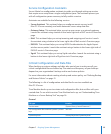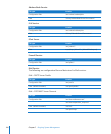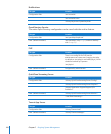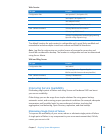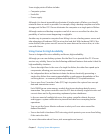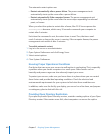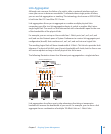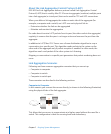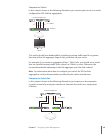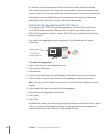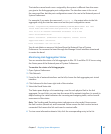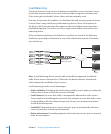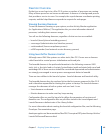
Chapter 7 Ongoing System Management 163
Link Aggregation
Although not common, the failure of a switch, cable, or network interface card can
cause your server to become unavailable. To eliminate these single points of failure,
you can use link aggregation or trunking. This technology, also known as IEEE 802.3ad,
is built into Mac OS X and Mac OS X Server.
Link aggregation allows you to aggregate or combine multiple physical links
connecting your Mac to a link aggregation device (a switch or another Mac) into a
single logical link. The result is a fault-tolerant link with a bandwidth equal to the sum
of the bandwidths of the physical links.
For example, you can set up an Xserve with four 1-Gbit/s ports (en1, en2, en3, and
en4) and use the Network pane of System Preferences to create a link aggregate port
conguration (bond0) that combines en1, en2, en3, and en4 into one logical link.
The resulting logical link will have a bandwidth of 4 Gbit/s. This link also provides fault
tolerance. If a physical link fails, your Xserve’s bandwidth will shrink, but the Xserve can
still service requests as long as not all physical links fail at once.
The following illustration shows four Ethernet ports aggregated as a single interface:
server1.example.com
400 Mbit/s
4 x 100 Mbit/s
bond0
en1 en2 en3 en4
Switch
Link aggregation also allows you to take advantage of existing or inexpensive
hardware to increase the bandwidth of your server. For example, you can form a link
aggregate from a combination of multiple 100-Mbit/s links or 1-Gbit/s links.



